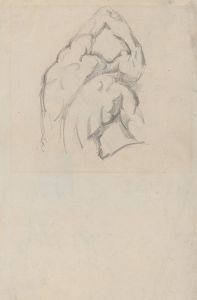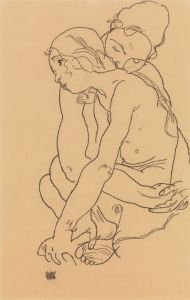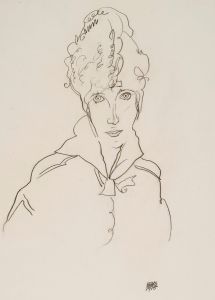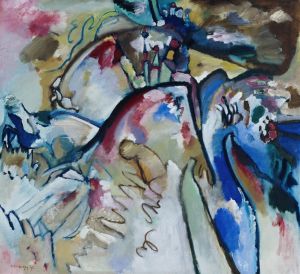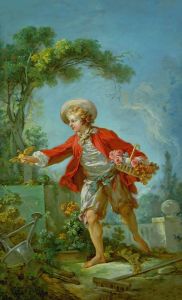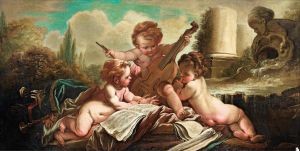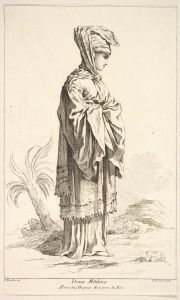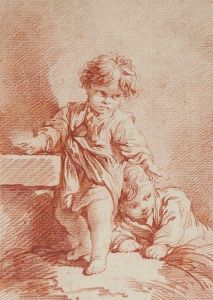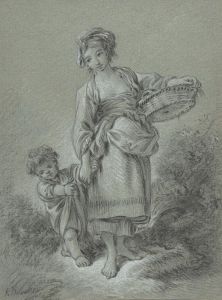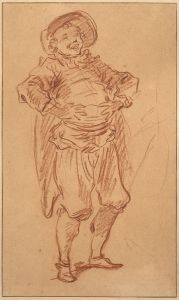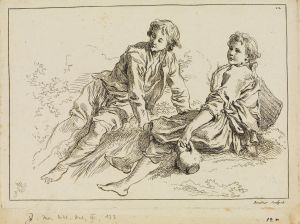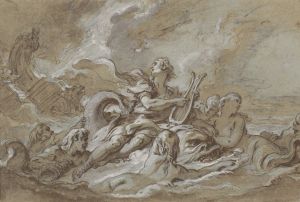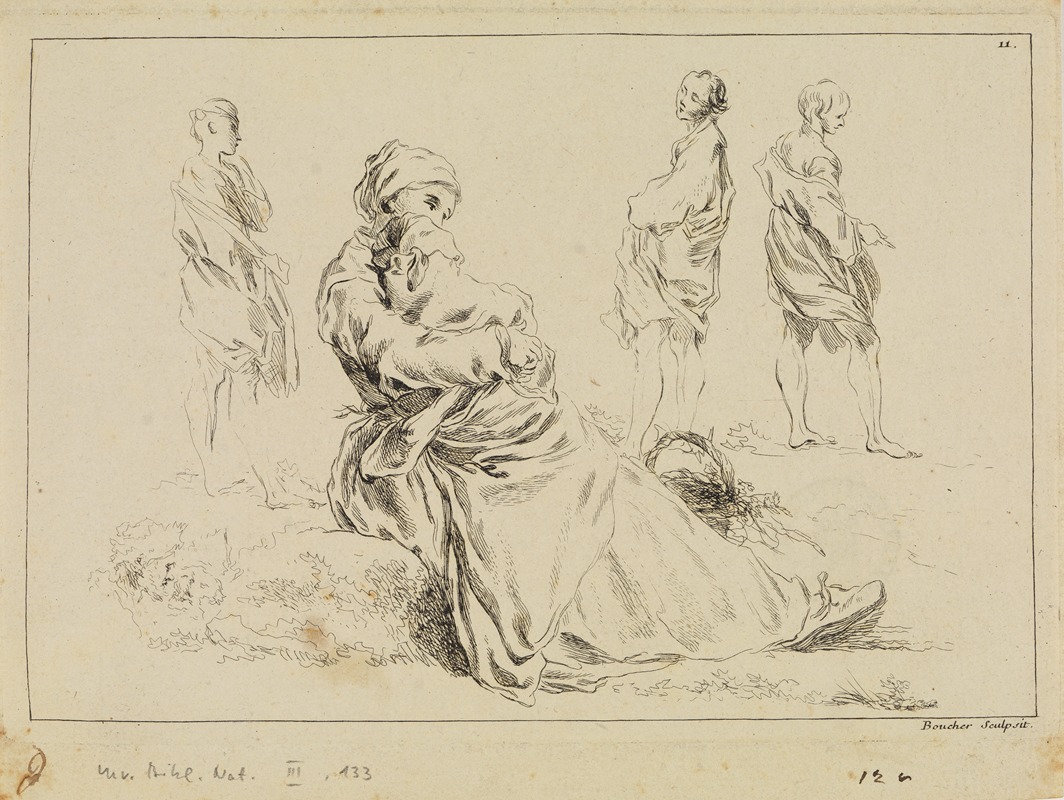
Figure studies
A hand-painted replica of François Boucher’s masterpiece Figure studies, meticulously crafted by professional artists to capture the true essence of the original. Each piece is created with museum-quality canvas and rare mineral pigments, carefully painted by experienced artists with delicate brushstrokes and rich, layered colors to perfectly recreate the texture of the original artwork. Unlike machine-printed reproductions, this hand-painted version brings the painting to life, infused with the artist’s emotions and skill in every stroke. Whether for personal collection or home decoration, it instantly elevates the artistic atmosphere of any space.
François Boucher, a prominent French painter of the Rococo period, is renowned for his idyllic and voluptuous paintings that often depict classical themes, pastoral scenes, and sensuous figures. Among his extensive body of work, "Figure Studies" stands out as a testament to his skill in capturing the human form with elegance and grace. Although specific details about a singular work titled "Figure Studies" by Boucher are scarce, the term generally refers to his practice of creating preparatory sketches and drawings that focus on the human figure.
Boucher's figure studies were integral to his artistic process, serving as preliminary explorations of composition, anatomy, and movement. These studies were often executed in chalk, ink, or pencil, showcasing his adeptness in rendering the subtleties of the human body. Through these works, Boucher honed his ability to depict the delicate interplay of light and shadow on skin, as well as the fluidity of drapery and the expressiveness of gesture.
Born in Paris in 1703, Boucher was a leading figure in the Rococo movement, which emphasized ornate detail, pastel colors, and playful themes. He was a favorite of Madame de Pompadour, the influential mistress of King Louis XV, who became one of his most significant patrons. Boucher's work is characterized by its light-heartedness and decorative quality, often featuring mythological subjects and idyllic pastoral scenes that reflect the tastes and sensibilities of the French aristocracy during the 18th century.
In his figure studies, Boucher often drew inspiration from classical mythology and literature, depicting gods, goddesses, and nymphs in various states of repose and interaction. These studies not only served as exercises in capturing the human form but also as a means of exploring narrative and emotion through body language and facial expression. Boucher's ability to convey a sense of movement and vitality in his figures is a hallmark of his style, contributing to the dynamic and lively quality of his finished paintings.
Boucher's influence extended beyond his own work, as he played a significant role in the development of the Rococo style and its dissemination throughout Europe. His approach to figure studies, with its emphasis on grace and beauty, set a standard for artists of his time and beyond. His works were widely collected and admired, and his techniques in figure drawing were studied by aspiring artists who sought to emulate his mastery of form and composition.
Today, Boucher's figure studies are appreciated not only for their technical skill but also for their contribution to the broader context of art history. They offer insight into the artistic practices of the Rococo period and the cultural milieu of 18th-century France. While specific examples of his figure studies may be housed in various museums and private collections, they collectively represent an essential aspect of Boucher's oeuvre and his enduring legacy as a master of the human form.





